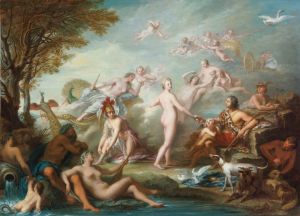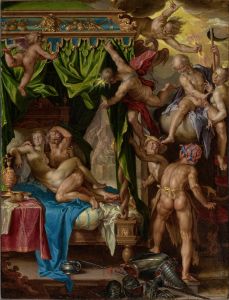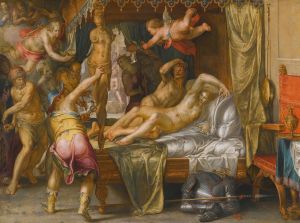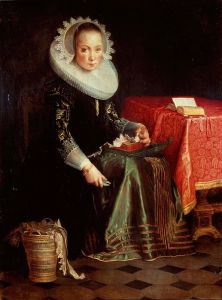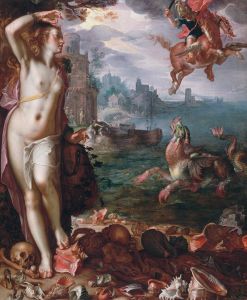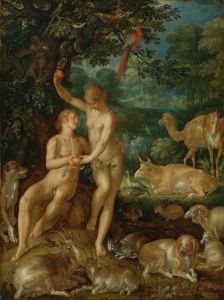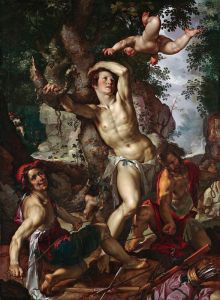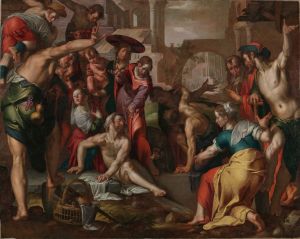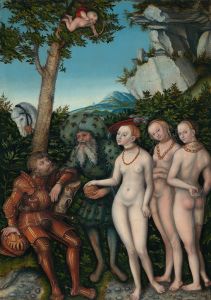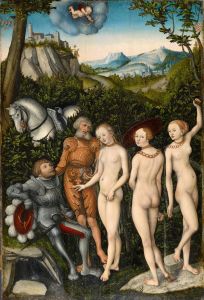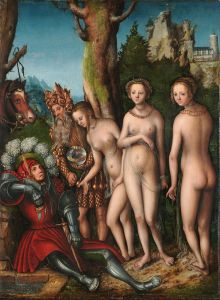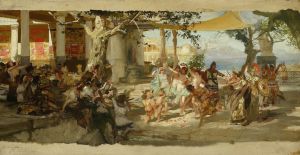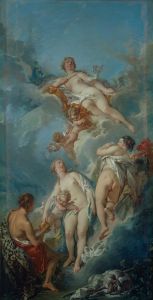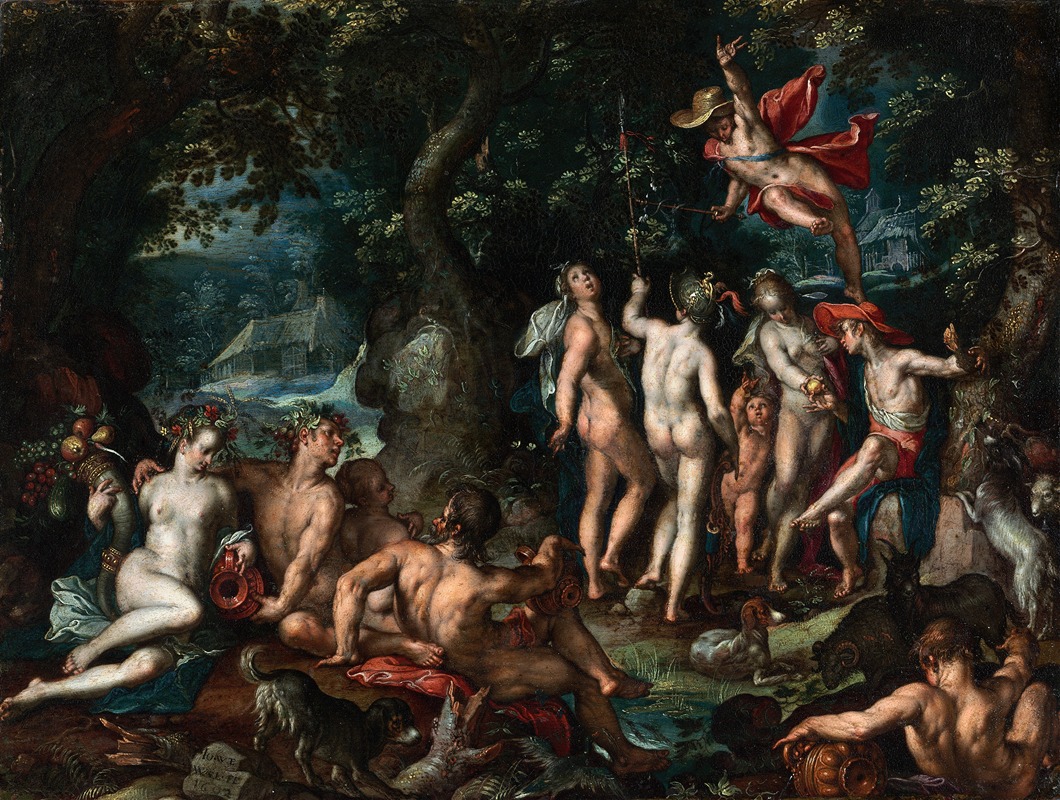
The Judgment of Paris
A hand-painted replica of Joachim Wtewael’s masterpiece The Judgment of Paris, meticulously crafted by professional artists to capture the true essence of the original. Each piece is created with museum-quality canvas and rare mineral pigments, carefully painted by experienced artists with delicate brushstrokes and rich, layered colors to perfectly recreate the texture of the original artwork. Unlike machine-printed reproductions, this hand-painted version brings the painting to life, infused with the artist’s emotions and skill in every stroke. Whether for personal collection or home decoration, it instantly elevates the artistic atmosphere of any space.
"The Judgment of Paris" is a painting by the Dutch Mannerist artist Joachim Wtewael, created in 1615. This work is a fine example of Wtewael's intricate and highly detailed style, which was characteristic of the Mannerist movement that followed the High Renaissance. The painting is currently housed in the J. Paul Getty Museum in Los Angeles, California.
The subject of the painting is drawn from classical mythology and depicts the story of the Judgment of Paris, a pivotal event that ultimately led to the Trojan War. According to the myth, Paris, a prince of Troy, was asked to judge a beauty contest between three goddesses: Hera (Juno), Athena (Minerva), and Aphrodite (Venus). Each goddess attempted to bribe Paris with a gift: Hera offered power, Athena offered wisdom and skill in war, and Aphrodite promised the love of the most beautiful woman in the world, Helen of Sparta. Paris awarded the golden apple to Aphrodite, leading to the abduction of Helen and the subsequent Trojan War.
Wtewael's painting captures the moment when Paris is about to hand the golden apple to Aphrodite. The composition is rich with symbolic elements and showcases the artist's skill in rendering the human form with exaggerated elegance and elongated proportions, typical of Mannerist aesthetics. The three goddesses are depicted in the nude, each displaying distinct attributes: Hera with a peacock, Athena with a helmet and spear, and Aphrodite with her son Eros (Cupid) by her side.
The background of the painting features a lush, idyllic landscape, which contrasts with the intense and dramatic foreground. Wtewael's use of vibrant colors and meticulous attention to detail are evident in the intricate textures of the fabrics, the delicate rendering of the goddesses' hair, and the elaborate depiction of the natural surroundings.
Joachim Wtewael (1566-1638) was a prominent figure in Dutch art during the late 16th and early 17th centuries. He was known for his small-scale cabinet paintings as well as larger works, often featuring mythological and biblical themes. Wtewael's work is characterized by its refined technique, complex compositions, and the use of vivid, sometimes almost surreal, color palettes.
"The Judgment of Paris" is a testament to Wtewael's mastery of the Mannerist style and his ability to convey complex narratives through his art. The painting not only reflects the artist's technical prowess but also his deep engagement with classical mythology and its themes of beauty, power, and desire.
In summary, "The Judgment of Paris" by Joachim Wtewael is a significant work of art that exemplifies the Mannerist style and the artist's skill in depicting mythological subjects with intricate detail and vibrant color. The painting remains an important piece in the collection of the J. Paul Getty Museum, offering viewers a glimpse into the rich artistic traditions of the Dutch Golden Age.





